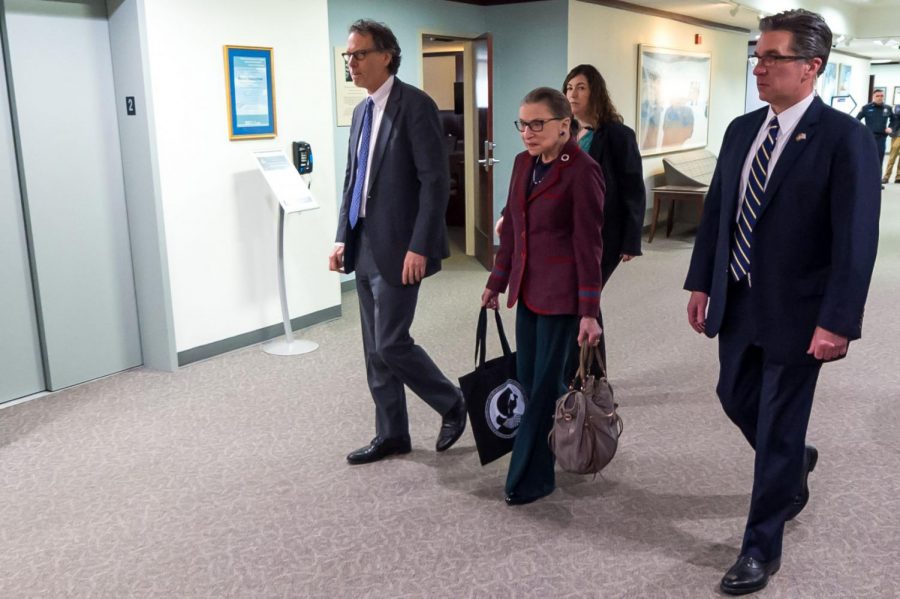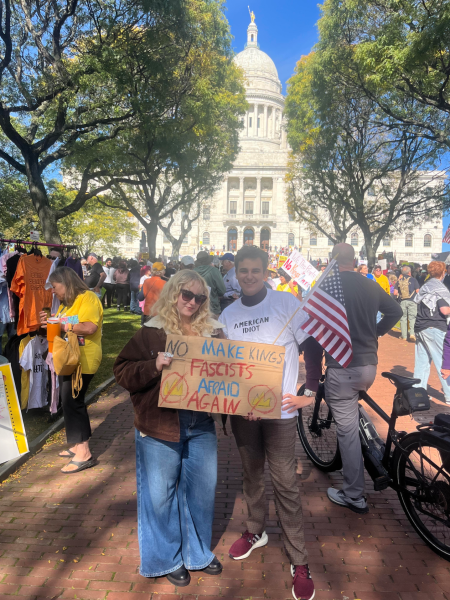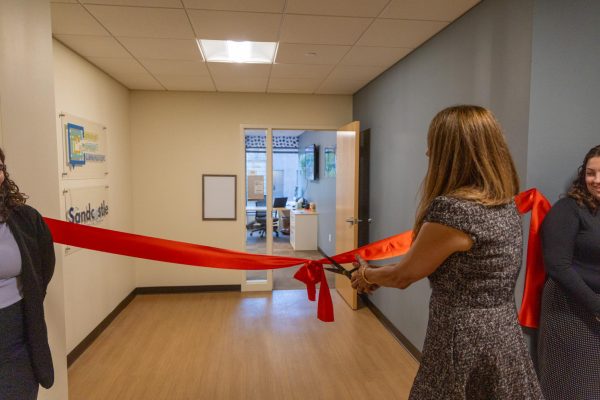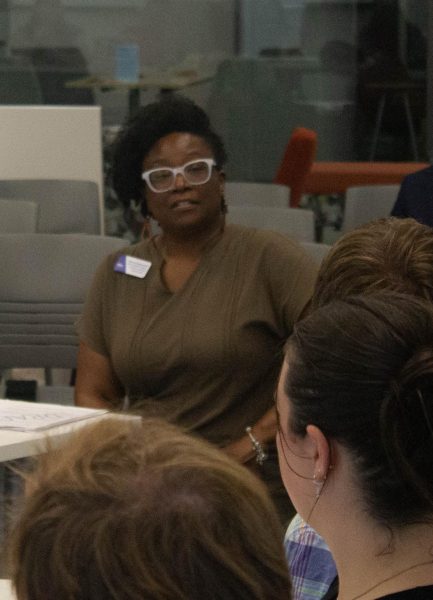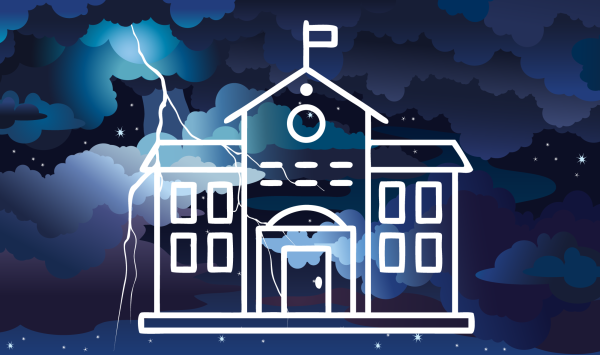RWU welcomes sitting U.S. Supreme Court Justice Ruth Bader Ginsburg to campus
Calling upon her decades of experience in law and advocacy, U.S. Supreme Court Justice Ruth Bader Ginsburg addressed the university’s School of Law on Tuesday, Jan. 30.
The “fireside chat” took place as a conversation between Ginsburg and 1st U.S. Circuit Court of Appeals Senior Judge Bruce M. Selya in the Appellate Courtroom.
The talk, which Selya called “a spontaneous and unrehearsed conversation between two people who have known each other for… more than 60 years at this point,” touched upon Ginsburg’s decades-long legal career, the struggles she overcame as a woman in law during the mid-20th century, and her hopes and advice for both aspiring lawyers and the nation.
Ginsburg attended law school during the 1950s—an era which she called, “not a great time for our nation.” Swayed by the influence of Sen. Joseph McCarthy, the U.S. fell into the Red Scare as an intense fear of communism gripped the country.
Inspired by both her undergraduate constitutional law professor, Robert E. Cushman, and the lawyers who defended the rights of individuals accused during the Red Scare, Ginsburg decided that being a lawyer was “a pretty nifty thing.”
Initially, Ginsburg was undecided on whether she should attend law or business school; Harvard, however, did not admit women into its business school at the time, leading her to enroll in the university’s law school.
Even in the law school, only nine women were in Ginsburg’s class—and to be one of the few women studying law at the time carried significant weight.
“We felt we were called on,” Ginsburg said. “We had a heavy responsibility; we were not speaking just for ourselves, but for all women.”
Outside of law school, the job market was no easier for women in the profession.
“Employers were upfront about not wanting to hire women,” Ginsburg said.
In spite of the many obstacles that she faced, Ginsburg became just the second woman to win confirmation to the Supreme Court in 1993.
While Ginsburg won confirmation with a 96-to-3 vote, Selya pointed out that none of the most recent four nominees received fewer than 30 dissenting votes, demonstrating the fierce political polarization that currently divides the country.
Ginsburg believes that this polarization is not irreversible, remaining hopeful that the country will return to its former bipartisanship. She highlighted the presidency of Jimmy Carter as an example of how quickly times can change.
“Jimmy Carter had only one term in office,” Ginsburg said. “There was no Supreme Court vacancy to fill, but that president literally changed the complexion of the U.S. judiciary.”
“Carter looked around and said, those judges, they all look like me; they’re all white, and they’re all men. But that’s not how the United States looks…. He appointed 11 [women] to courts of appeals, and I was one of the lucky 11.”
Ginsburg expressed that the United States today can still achieve change on this level if leaders on both the left and the right take a stand and cooperate.
Ginsburg’s well-known friendship with the late Justice Antonin Scalia symbolizes for many the spirit of bipartisanship to which Ginsburg hopes the nation will return. Although Scalia and Ginsburg were regarded as political opposites, the two justices shared a close bond, even inspiring a comedic opera, “Scalia/Ginsburg.”
“I disagreed with a lot of what he said, but I was fascinated by the way that he said it,” Ginsburg said of the first time she met Scalia. “This is a man who cares about words.”
During a question and answer session that followed the conversation, one audience member asked Ginsburg how the nation as a whole can learn to work together as Ginsburg and Scalia did.
“I have cause to be hopeful when I mention how things were in the 50s, when the Red Scare was overwhelming in the United States,” Ginsburg said. “That time has passed. This time will too.”
Among other audience questions, Ginsburg also answered one law student’s inquiry as to what she considers the most impactful Supreme Court decision of her tenure. Ginsburg recalled the Supreme Court’s 2015 Obergefell v. Hodges decision, a landmark case that legalized marriage equality in all states.
“Think of how it was in the beginning, in 1787 when the original Constitution was adopted,” Ginsburg said. “It starts out, ‘We the people.’ And who are ‘We the people’ in 1787? White, male, and property owners. Over the course of our history, the composition of ‘We the people’ has expanded.”
She continued, “It now includes the people left out at the beginning…. So the idea of an embracive society that not simply tolerates but appreciates differences, I think is what has made our nation great.”

